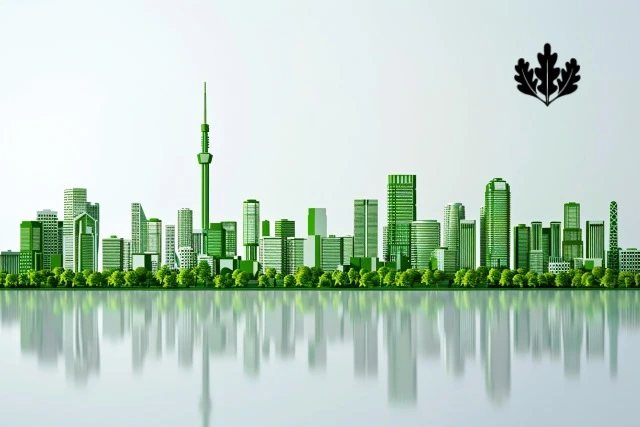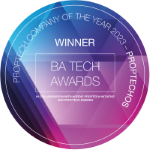Reducing the environmental impact of the built environment is vitally important for the building industry. Investors know that sustainability is the number one priority when funding developments; asset managers must meet their ESG goals.
But in the age of greenwashing and heightened corporate awareness of the impact of misleading ESG claims, sustainable property investment is not always as straightforward as it seems.
To counter this, environmental benchmarking relies on unequivocal data-led methodologies to determine a building’s sustainability credentials, providing certainty for developers and investors.
This article focuses on arguably the most prestigious of these benchmarks — the Leadership in Energy and Environmental Design (LEED) certificate, awarded by the U.S. Green Building Council (USGBC) for exceptional green building design, operation, and maintenance.
From 15th-century Venetian palazzos to hyper-modern NFL stadiums, LEED certification is the gold standard for green buildings in more than 160 countries worldwide. But how can you leverage this key benchmark against the value of your real estate portfolio? This article will tell you everything you need to know.
How does the LEED rating system work?
So how does the LEED certification process work in practice? First, it operates using a points-based system, with a third-party verification process conducted by Green Business Certification Inc. (GBCI).
Based on this, developments are awarded one of four levels of certification: Certified (40-49 points), Silver (50-59 points), Gold (60-79 points) and Platinum (80+ points).
LEED certifications cover a wide range of developments, each with its own ratings systems and scorecard guides for transparency. Their certifications include:
- Building Design and Construction (BD+C) – for new builds and/or major renovations
- Interior Design and Construction (ID+C) – for complete interior fit-out projects
- Building Operations and Maintenance (O+M) – for upkeep of existing buildings
- Neighborhood Development (ND) – covers the sustainability and connectivity of multi-use developments within a community
Processes also include certifications for residential design, including single-family homes and small apartment complexes (less than four stories), city-wide certifications for local government and planning authorities, and guidance for building recertification.
Maximizing a LEED certification score
To achieve a high level of LEED certification and pass the rigorous verification audit conducted by the GBCI, developers will need their projects to meet a range of criteria in key areas, including carbon, energy, water, waste, transportation, materials, health, and indoor environmental quality.
Energy efficiency and renewable energy are major components of the benchmark. A new-build development can earn five points against its certification score if it uses on-site renewable energy generation and as many as 18 points for energy optimization through efficient HVAC systems and demand-adjusted power consumption.
LEED v5
In 2025, the USGBC will move to a new certification methodology — LEED v5. It aims to further the benchmark’s goal of decarbonizing the built environment by rewarding projects and developments that demonstrate a long-term strategy to reduce embodied carbon and further optimize operational emissions from buildings.
LEED v5 will also consider the building’s wider impact, rewarding construction that actively promotes good health and well-being of its occupants. Developments are encouraged to consider the project’s resilience strategies in the face of extreme climate conditions.
Benefits of the LEED rating system for investors
Building to LEED certification makes perfect sense for property developers, as their operational efficiency can save as much as a quarter (25%) on energy bills and a fifth (19%) on maintenance. Insurance brokers also offer discounted premiums for LEED-certified buildings, as their high operating standards represent a lower risk of claims.
But how does LEED certification benefit investors? How can they ensure that their choice to fund projects to these specifications delivers a better return on investment?
The impact of LEED on real estate value
For investors, the bottom line will naturally be its occupancy income and resale value. Investors want to know that funding a development will yield high rental costs and eventual ROI when the time comes to sell the property.
Studies demonstrably prove that LEED certification impacts office rental income. A review of 20,000 properties in the U.S. by CBRE found that rents were almost a third (31%) higher with certification than without.
Mike Watts, CBRE’s President of Americas Investor Leasing, argues that “A LEED certification may turn out to be a key determinant in a given occupier’s decision of where to lease their space, regardless of whether that designation brings a rent premium.”
Research also shows that certification can be particularly advantageous for Class B office space, with rents for these mid-market properties earning three times more over their non-LEED counterparts than those in the Class A bracket.
The impact of LEED on real estate value
LEED-certified buildings don’t just command higher rents. A 2021 study by Cushman and Wakefield found that LEED-certified buildings commanded a 21% higher market price in the U.S. than those without while increasing occupancy rates at a time when firms struggled to fill office space during the COVID-19 pandemic.
A further report conducted in Czechia found that properties certified to the LEED gold standard or higher could earn an average 25-30% higher market value. The USGBC bases its pitch to investors on the argument that while development costs are higher to achieve LEED certification, the resulting properties tend to be the portfolio’s highest performers.
Operational efficiency and ESG goals
Beyond the purely commercial advantages, investors should know that funding green building developments is the new norm in the industry. As major real estate investment trusts (REITs) move towards decarbonizing their portfolios and meeting their long-term net-zero targets, those not investing in sustainable projects will be left behind by an industry moving in the opposite direction.
LEED certification and other environmental benchmarks will remain significant in the face of tighter regulation. The European Union introduced its Corporate Social Responsibility Directive (CSRD) in 2024, and policymakers globally are acutely aware that reducing the built environment’s carbon footprint is a major objective in tackling the Climate Crisis.
How building analytics can enhance your building’s LEED rating
With REITs more competitive than ever with sustainable developments, the need for LEED and other environmental benchmarks has never been greater.
With increasingly advanced systems, including next-generation digital twin software and integrated building management systems (BMS) factors in a building’s LEED rating, harnessing a data-driven approach to facilities management is now key to maximizing the operational efficiency of developments and ensuring they offer the best value for money.
Automate your certification with Certify
To support real estate managers and REITs with oversight of their portfolios and help organizations make the decisions they need to drive toward meeting their long-term ESG goals, ProptechOS has created Certify – an automated certification and compliance software with integration for LEED certification.
Whether your portfolio contains LEED-certified buildings, or a mixture of environmental benchmarks, Ceritfy’s technology integrates with digital twin technology and BMS structures across a real estate portfolio, making it easier to secure recertification of buildings and improve your LEED ratings across a trust’s suite of buildings.
Your CRE business can sign up for a free trial today.

Per Karlberg
Per Karlberg, a distinguished technology executive, demonstrates deep expertise in the nexus of real estate, technology, and ESG. Holding advanced degrees from Lund University, and with key roles as CEO of our company and Co-Founder of ProptechOS, he has shaped the proptech field through significant contributions to real estate technology advancements. His instrumental work in co-authoring “The realestatecore ontology” has facilitated digital transformation and ESG breakthroughs in the real estate sector.
Read his full bio and information here.

